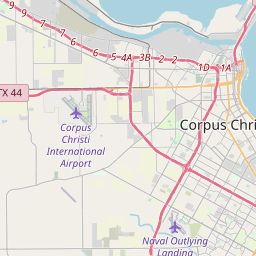Felix von Blucher
Historical marker location:






German native Anton Felix Hans Hellmuth von Blucher (1819-1879) came to the United States in 1844, arriving in New Orleans. The following year he moved to Texas and joined the German settlers at New Braunfels. Trained in engineering, languages, and law, he served as an interpreter and surveyor. In 1847 he assisted the colony leader, John O. Meusebach, in the negotiation of a treaty with Comanche Indians that opened the Fisher-Miller land grant to settlement.
In 1849, following his service in the Mexican War, Von Blucher returned to Germany and married Maria Imme (d. 1893). The same year they moved to Nueces County and settled on land at this site. One year later he mapped a trade route to Eagle Pass on the Mexican border. In 1852 he became County Surveyor, an office he held until his death. He also served as City Alderman, 1852-56. During the Civil War Von Blucher joined the Confederacy and designed and directed the placement of fortifications in Corpus Christi and the South Texas coastal area.
After his death in 1879, his children built homes here on family land, which became known as Blucherville. For over 100 years, 1852-1954, family members served as county surveyors and cartographers of the region.
(1980)
As one of the most visible programs of the Texas Historical Commission (THC), historical markers commemorate diverse topics in Texas history, including: the history and architecture of houses, commercial and public buildings, religious congregations, and military sites; events that changed the course of local and state history; and individuals who have made lasting contributions to the state, community organizations, and businesses.
The world's first rodeo was held in Pecos, Texas in 1883. The event included bronco riding, calf roping, and bull riding.
In 1828, the Mexican government granted land to Colonel Henry Lawrence Kinney, an American entrepreneur, who founded the trading post of Kinney's Trading Post near the Nueces River. This marked the beginning of Anglo settlement in the area. Nueces County was officially established in 1846, following the Texas Revolution and subsequent annexation of Texas by the United States.
Throughout the 19th century, Nueces County played a significant role in Texas' development. The town of Corpus Christi, which served as the county seat, became an important regional trade center due to its proximity to the Gulf of Mexico. The county flourished as a shipping hub for livestock, cotton, and other agricultural goods.
The county's history was greatly influenced by its participation in several military conflicts. During the American Civil War, Corpus Christi served as a center for Confederate forces, and the county witnessed both Union and Confederate occupation. Additionally, the county played an important role during World War II, with Corpus Christi becoming a major training center for Navy pilots.
In recent times, Nueces County has continued to grow and evolve. The county's economy has diversified, with tourism, oil and gas, and the military being major contributors. The region boasts numerous attractions, including beautiful coastal beaches, cultural sites, and a vibrant culinary scene. Today, Nueces County remains an important and thriving part of Texas' history and economy.
Nueces County Timeline
This timeline provides a glimpse into the major events and milestones that have shaped the history of Nueces County, Texas.
- 1836 - Nueces County is established as one of the original counties in the Republic of Texas.
- 1845 - Texas becomes a state of the United States, and Nueces County remains part of the state.
- 1848 - The county seat is established in Corpus Christi.
- 1850 - The population of Nueces County reaches 756 residents.
- 1852 - The Corpus Christi Cathedral is constructed, becoming a significant landmark in the county.
- 1872 - The railroad reaches Nueces County, leading to increased economic development and population growth.
- 1875 - The Nueces County Courthouse, built in the Renaissance Revival style, is completed.
- 1900 - A devastating hurricane strikes the county, causing significant damage and loss of life.
- 1914 - The Port of Corpus Christi is established, becoming a major hub for trade and industry.
- 1931 - The Nueces County Courthouse is expanded and remodeled to its current appearance.
- 1940 - Nueces County experiences a population boom, with the county's residents totaling over 101,000.
- 1987 - Hurricane Gilbert causes widespread destruction in Nueces County and the surrounding areas.
- Present - Nueces County continues to be a thriving center for commerce, industry, and tourism.